Did you know that up to 70 percent of Americans will experience low back pain, at some point in their lives? With numbers like that, it’s no wonder that many times, low back pain can become a chronic issue. If you or a loved one have been experiencing any early warning signs of a back injury or sciatica that include numbness, tingling and intense pain, physical therapy can help. Our experienced physical therapists, have the skills needed to provide safe, effective and non-invasive treatment, for patients of all ages. Contact us today to learn more about the benefits of physical therapy for low back pain and sciatica.
What is Sciatica?
When the sciatic nerve becomes irritated, it results in intense and often chronic pain that is called sciatica. Anything that irritates the sciatic nerve can result in pain, from mild to very severe. However, in most cases, sciatica is the result of a compressed nerve, in the lower spine. Many people confuse the term sciatica with general low back pain. But this common musculoskeletal condition is not just limited to the lower back. Because the sciatic nerve is the widest and longest nerve in the body, it is possible for patients to experience pain that runs down from the lower back, into the buttocks, then down through the legs and feet.
The sciatic nerve controls a group of muscles in the lower legs, supplying sensation to the lower leg area and the foot. While sciatica is not technically a condition but a symptom of other common issues affecting the sciatic nerve, it is estimated that up to 40 percent of people will suffer from sciatica at least once in their lifetime.
Often, sciatica is the result of an injured spinal disc compressing the sciatic nerve. When a patient has a ruptured disc, it can leak (herniate) or protrude (bulge) out of place and put pressure on the nearby nerve. This type of injury can be the result of regular wear and tear, repetitive stress on the lower back or some form of acute trauma. Other common underlying issues that may result in sciatic nerve pain include:
- Degenerative Disc Disease
- Spinal Stenosis
- Osteoarthritis
- Bony tumors (in rare cases)
Common Symptoms and Risk Factors Associated with Low Back Pain and Sciatica
While the sciatic nerve originates in the lower spine, some people with the condition may not experience any low back pain at all. Instead, they suffer from a number of different symptoms that affect the nerves that flow into the right or left leg. In cases where sciatica affects the legs, patients may experience symptoms that include:
- Pain radiating from the buttocks, down into the back of the leg and sometimes into the feet.
- Shooting pain in the legs, numbness, and burning pain
- Weakness in the legs
- Decreased reflexes in the legs
Other common symptoms may include back stiffness, a decreased range of motion in the hip area, muscles tenderness and spasms. Patients may also find that their pain and other symptoms seem more severe in the morning and after prolonged periods of standing or sitting. While lower back pain and sciatica can affect people of all ages, it typically affects men aged 30 to 50, people who have very physically demanding jobs, those who have recently experienced some form of physical trauma like a car accident and anyone who may sit or stand a lot. Additionally, diabetes, smoking, and obesity may increase your risk of sciatica and lower back pain.
How Does Physical Therapy Help Treat Sciatica and Low Back Pain?
Our physical therapists can help to manage, low back pain and sciatica symptoms, through the use of targeted physical therapy treatment. This safe and prescription drug-free treatment option, is non-invasive and designed to promote faster, natural healing, while providing fast pain relief. Instead of simply treating your symptoms, physical therapy is designed to alleviate pressure on the sciatic nerve for long-lasting relief. Want to learn more about the benefits of physical therapy for lower back pain and sciatica? Contact Us today at Crystal Lake Physical Therapy Inc. to schedule an appointment.
